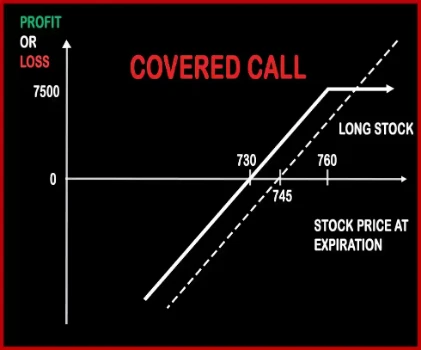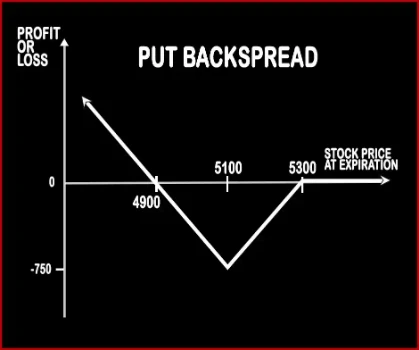Compare Strategies
| COVERED CALL | PUT BACKSPREAD | |
|---|---|---|

|

|
|
| About Strategy |
Covered Call Option StrategyMr. X owns Reliance Shares and expects the price to rise in the near future. Mr. X is entitled to receive dividends for the shares he hold in cash market. Covered Call Strategy involves selling of OTM Call Option of the same underlying asset. The OTM Call Option Strike Price will generally be the price, where Mr. X will look to get out o |
Put Backspread Option StrategyIf the trader is bearish on market and bullish in volatility, he will implement this strategy. However the trader can be neutral in nature i.e. indifferent if the market moves in either of the direction, this strategy will make profits, but uptrend will give a capped income than downtrend which will give unlimited returns. |
COVERED CALL Vs PUT BACKSPREAD - Details
| COVERED CALL | PUT BACKSPREAD | |
|---|---|---|
| Market View | Bullish | Bearish |
| Type (CE/PE) | CE (Call Option) | PE (Put Option) |
| Number Of Positions | 2 | 2 |
| Strategy Level | Advance | Advance |
| Reward Profile | Limited | |
| Risk Profile | Unlimited | |
| Breakeven Point | Purchase Price of Underlying- Premium Received |
COVERED CALL Vs PUT BACKSPREAD - When & How to use ?
| COVERED CALL | PUT BACKSPREAD | |
|---|---|---|
| Market View | Bullish | Bearish |
| When to use? | An investor has a short term neutral view on the asset and for this reason holds the asset long and has a short position to generate income. | |
| Action | (Buy Underlying) (Sell OTM Call Option) | |
| Breakeven Point | Purchase Price of Underlying- Premium Received |
COVERED CALL Vs PUT BACKSPREAD - Risk & Reward
| COVERED CALL | PUT BACKSPREAD | |
|---|---|---|
| Maximum Profit Scenario | [Call Strike Price - Stock Price Paid] + Premium Received | |
| Maximum Loss Scenario | Purchase Price of Underlying - Price of Underlying) + Premium Received | |
| Risk | Unlimited | Limited |
| Reward | Limited | Unlimited |
COVERED CALL Vs PUT BACKSPREAD - Strategy Pros & Cons
| COVERED CALL | PUT BACKSPREAD | |
|---|---|---|
| Similar Strategies | Bull Call Spread | |
| Disadvantage | • Unlimited risk, limited reward. • Inability to earn interest on the proceed used to buy the underlying stock. | |
| Advantages | • Profit from option premium, rise in the underlying stock and dividends on the stock. • Allows you to generate income from your holding. • Profit when underlying stock price rise, move sideways or marginal fall. |